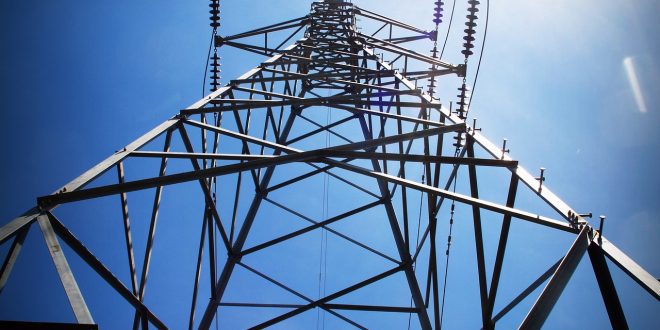By: Sean McEvoy, SVP Energy, Veritone
When the U.S. built its power grid nearly one hundred years ago, it was recognized as one of mankind’s greatest engineering achievements of the 20th century. Today, while it is considered the world’s largest machine, it is extremely vulnerable to 21st century soaring demands and climate threats. Comprised of thousands of power plants and thousands of high-voltage power lines, as well as millions of low-voltage lines and distribution transformers connecting residents to energy needs across its 50 states, the U.S. Department of Energy reports that some parts of this machine have never been replaced or updated. Add to this the fact that 70% of its transmission lines and power transformers are more than 25 years old, with the average age of its power plants more than 30 years old.
At least since 2011, when the US released A Policy Framework for the 21st Century Grid, modernizing the electric grid to increase resilience, reliability and efficiency has been a priority. Not only is it critical to our defense systems but also daily life. When the power goes out, it affects businesses, schools, transit systems, hospitals and other critical services and results in costs estimated between $18 billion-$33 billion annually. Depending on the year, losses due to power outages caused by severe weather have varied wildly, however, and far above the averages. Hurricane Ike in 2008, for example, racked up $40 billion to $75 billion in losses.
Recognizing the urgency to upgrade US infrastructure and the need to reduce carbon emissions to mitigate climate change causing major weather events, a $1.2 trillion bipartisan infrastructure bill was signed into law in November 2021. The plan includes the single largest investment in clean energy transmission in American history—more than $65 billion—to (among a host of other initiatives) build thousands of miles of transmission lines intended to facilitate the expansion of renewable energy. Considering decreasing costs of renewable energy and demand from consumers and shareholders for more sustainable practices, the change cannot come fast enough. To illustrate how little we have achieved globally, only six of the G20 countries, which collectively account for 80% of the world’s emissions, have formally increased their reduction targets.
Turns out, transitioning to clean energy is complicated, particularly in regard to distributed energy resources (DERs) like solar, which relies on conditions in the environment—which are unpredictable without the right tools. This is where artificial intelligence (AI) comes in. Through a distributed AI framework applied to systems such as EMS, SCADA, ADMS, DERMS, today’s dynamic, unpredictable DERs can be integrated, optimized, synchronized and controlled to increase reliability and resiliency of the overall grid. A U.S. investor-owned utility in the southeast, for instance, is transforming its solar power plant into a dispatchable grid resource capable of supporting operational expansion requirements. Using an AI-powered digital twin that mirrors the physical environment, simulations of all input data are run to study the performance of the original physical asset.
Data is collected from both internal and external data sources such as sensors, with ML occurring both centrally and at the device level. Different rules can be applied to meet strategic and compliance goals in real time to maximize the desired performance. As more assets are added, the virtual environment adjusts to accommodate and perform multiple different simulations that identify issues, with feedback provided to the physical assets in real-time. Data is continuously refined through continuous learning to allow the models to get smarter over time and learn from previous decisions. This allows the utility to achieve the following:
- Reach performance metrics that meet local demand
- Reduce operational costs
- Increase grid reliability and resiliency
- Satisfy environmental issues
- Maximize infrastructure investments
- Assure safe and reliable operation of its DERs with the grid
With real-time data modeling of weather and power supply/demand combined with device control, the utility now has the capability to accurately predict its solar output, control the temperature of its inverters and optimize the plant to meet future demands accurately and dynamically seconds, minutes or days ahead. This lowers the levels of spinning reserves required to cover gaps in solar energy output, resulting in reduced operating costs, while streamlining decarbonization and overcoming intermittency challenges at the same time. The AI solution is also increasing the plant’s reliability by giving the grid and devices ample time to respond to the fluctuations in solar generation and seamlessly transition between battery stored energy and solar. Finally, it’s providing a competitive edge in the energy exchanges by automatically optimizing dispatch decisions around dynamic energy pricing, so that energy can be bought when it is cheapest and provided when it is most valuable. In a price-regulated industry like utilities, this is a major advantage.
Such an AI-based approach allows autonomous decisioning at the grid’s edge, where latency control for physical devices is critical. Each device at the edge—inverters, capacitors and batteries—can be controlled in milliseconds. This approach can also enable old and new DERs to actively synchronize and optimize in real time with each other and with the power grid, by machine-to-machine communication and decision-making at the edge of the asset control system. Active synchronization assures that all assets under control work together to meet individual and system-wide goals.
The US has some serious challenges ahead. Traditional equipment, such as inverters, cannot handle choppy outputs often associated with green energy because they were designed to provide steady streams of energy. Coal plants are a prime example. With AI, utilities gain insight into potential energy spikes, which allows the power grid to make appropriate adjustments in ramping up production while preventing equipment burn-out.
In the last few years alone, the advancements in AI and machine learning have been remarkable, driving the acceleration of 5G networks, virtual realities, connected vehicles, robotics, smart appliances, new medical diagnostic equipment and more. For utilities, AI has the potential to make the transition to clean energy smooth, and equally important, shift the relationship between consumer and supplier. Imagine residential “prosumers” generating, storing and selling their own power in peer-to-peer markets. With the increasing penetration of DERs, it is highly likely. Until then, the U.S. will need to sharply focus on a new engineering feat for the 21st century. This will require collaboration at every level, from private, public and government organizations right down to the consumer.
About Sean McEvoy
 Sean McEvoy is a seasoned software executive with over 20+ years of experience in the software industry working at such companies as IBM, DELL, QUEST, and Symantec.
Sean McEvoy is a seasoned software executive with over 20+ years of experience in the software industry working at such companies as IBM, DELL, QUEST, and Symantec.
Sean has held executive leadership positions across an array of business units including customer success, sales, professional services, product management, engineering and channel development.
Having lived outside the US in both Europe and Asia, Sean has a strong understanding of international markets. In his current role as SVP, at Veritone Inc., Sean is responsible for business development for Veritone’s Artificial Intelligence platform.
Sean holds a BSc. in software engineering and an MBA in International Business.
 Alternative Energy HQ solar power for homes, wind energy, and bio fuel issues
Alternative Energy HQ solar power for homes, wind energy, and bio fuel issues







